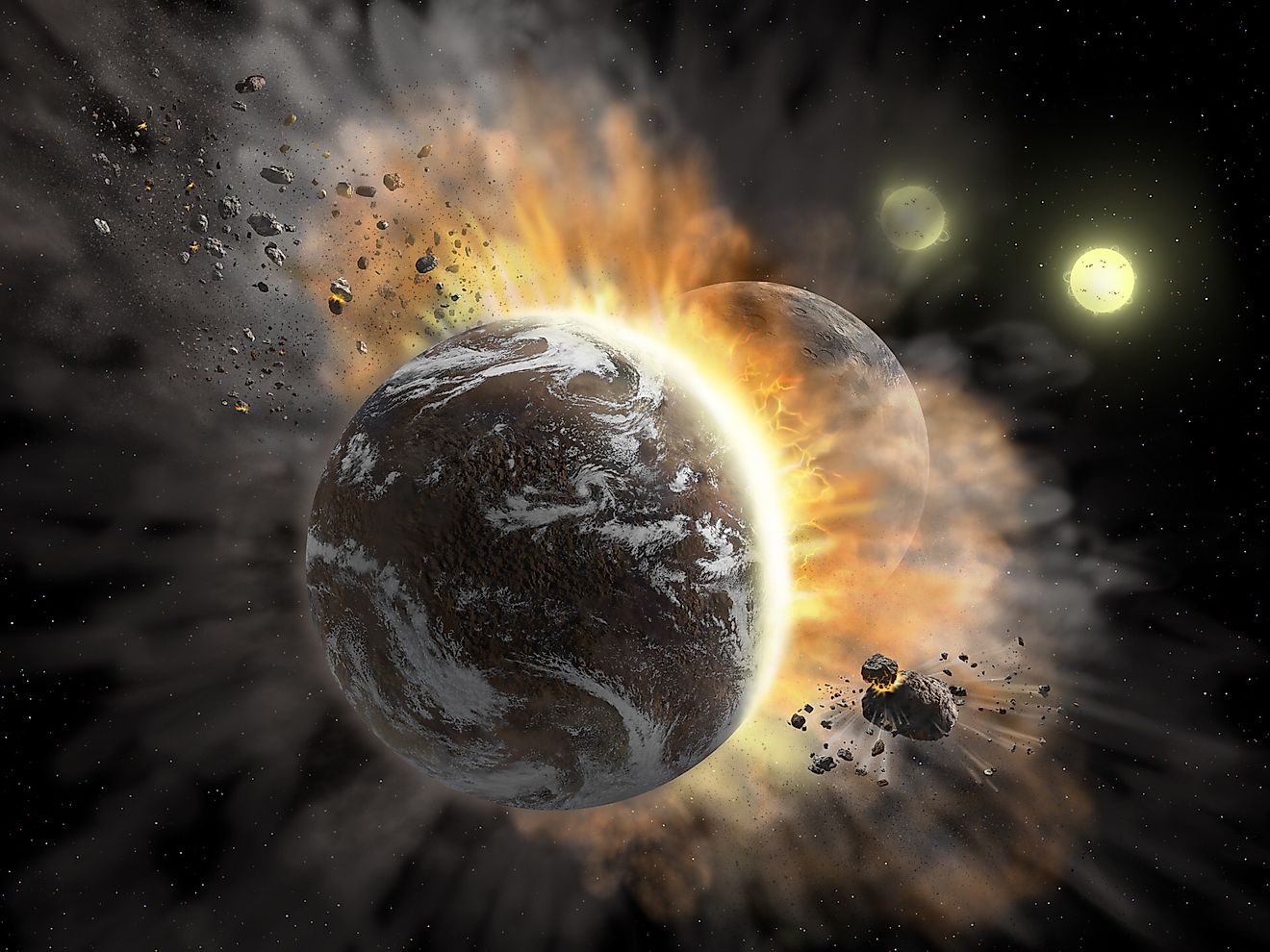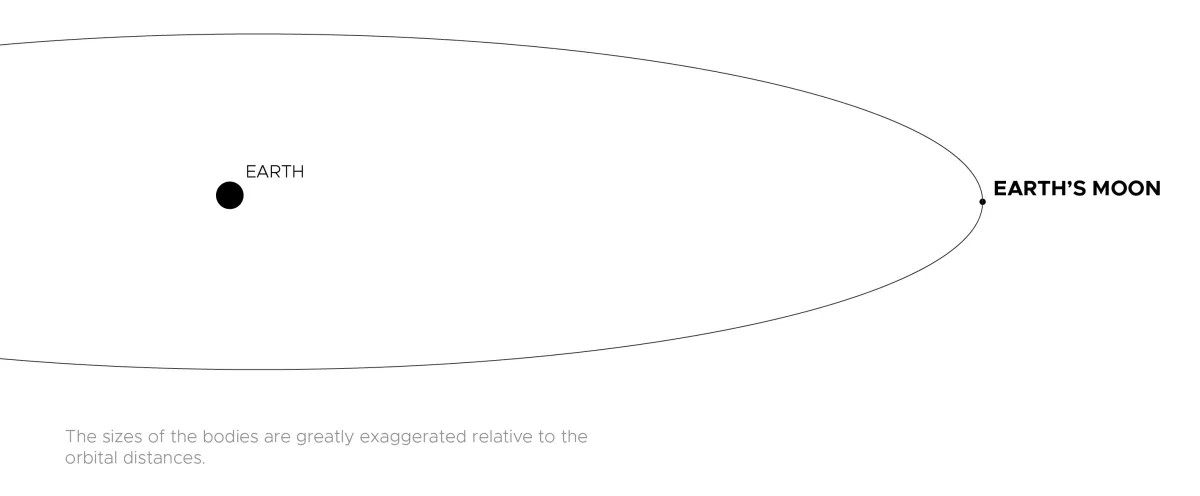The Moon is the natural moon of our planet; it is a rocky object and rotates around our planet in an average distance of approximately 384,400 km (238,855 miles) on an average distance. It is the fifth-largest solar system satellite and the brightest in the night sky, although it does not possess its own light; the visible light is reflected sunlight. Its gravity is in fact about a sixth of Earth's, and it rotates tidally fixed against Earth, so that it never gives us any other side than the one we are on.
But, like how the name of the moon came to be, how did the moon come to be what it is, its makeup, how it is covered, or was there water on the moon or not?
There are many Mysterious & Interesting facts about the Moon that are still unknown to scientists and astronomers.
In this article, we will uncover 7 Mysterious & Interesting Facts About the Moon. So, let’s dive into this article for more information.
What is Moon?
So, before knowing the Mysterious & Interesting Facts About the Moon, let’s first understand what the Moon is.
A moon is an astronomical object in orbit around a planet or other larger bodies (non-stellar) and which are commonly referred to as a natural satellite. The Moon is the only natural satellite of our planet which glitters because of reflecting sunlight. Moons are of different shapes, sizes, and compositions, and they orbit planets, which are the dwarf planets.
7 Mysterious & Interesting Facts About the Moon
1. How the Moon Got Its Name
The reason why our Moon got the name of all moons was because people did not know of other moons at all until Galileo Galilei, the discoverer of four moons surrounding Jupiter in 1610. In Latin, the Moon was Luna, and all those words that deal with the Moon are Lunar, e.g. lunar.
2. The unknown origin of the Moon
The historical theory about most generally accepted theory on why the Moon was formed is the Giant Impact theory- the theory that the Moon was formed when the early Earth collided with a Mars-sized object, Theia.

Source: Worldatlas
However, there is an issue: the samples of the moon are nearly indistinguishable from the rocks on Earth.
In case the Moon was formed because of a collision with another planet, then more obvious chemical differences would have been possible.
Scientists are yet to figure out this almost flawless resemblance. Others believe that the Moon is not a foreign object and is instead a fragment of the Earth that severed away. Other people go off the record by suggesting that, maybe it was put there -audacious enough, but it comes up on the debate table on its odd orbit and odd composition.
3. Is there any Potential for Life to exist on the moon?
Those numerous missions that have visited the moon have not found any material to tell them it has living creatures. Nevertheless, the future colonisation of people could be made on the Moon. The fact that the moon contains water ice and it is found in the darkest craters in the poles makes the moon a bit more habitable to future human colonists.
4. Size and Distance
The Moon is only a third of the breadth of the Earth, and has a radius nearly equivalent to 1,080 miles (1,740 kilometres). Assuming that the Earth had been reduced to the size of a nickel, the moon would have been approximately the size of a coffee bean.

Source: NASA
The Moon has a distance of an average of 238,855 miles (384,400 kilometres). That is to say that the space between the moon and Earth has the capacity to accommodate 30 Earth-sized planets.
The Moon is gradually drifting away leaving the Earth, and it is drifting one inch a year.
5. Orbit and Rotation
It is rotating in the same direction as it rotates around the Earth (synchronous rotation) such that the same part is facing the Earth at all times. The far side is what some people refer to as the dark side, the side that we do not see on Earth, but this is not true.
During the rotation of the Moon around the Earth, various areas have the sunshine at varying moments or darkness. The dynamic lighting is what makes the Moon, on our part, have phases. The hemisphere of the Moon that we can observe on the Earth is in full daylight from the Sun during a full moon. And we have a "new moon" when all of the moon is in the light of the sun, and we are facing the side of it that is in the dark.
It takes the Moon just 27 days to rotate around the planet Earth and at the same rate or rather takes the same time, it spins. Because the Earth is also in motion, that is, it is rotating on its axis as it goes round the Sun, then in our view, the Moon is seen to be going round us in a period of every 29 days.
6. Rings
The Moon has no rings.
7. Water on the Moon
During the initial exploration of the moon and the study of all the samples that were returned to us by the missions of Apollo and Luna, we believed that the surface of the moon was dry.
In 2008, the Indian mission Chandrayaan-1 first provided evidence of a definite discovery of water, which observed that the hydroxyl molecules are distributed throughout the lunar surface as well as concentrated at the poles.
Here, missions like the Lunar Prospector, LCROSS and Lunar Reconnaissance Orbiter have not only demonstrated that the surface of the Moon has global hydration, but there are, in fact, high concentrations of ice water in permanently shadowed areas of the lunar poles.
Conclusion
In conclusion, the Moon is one of the most interesting celestial objects as it keeps the secrets of the Earth's past and the development of the solar system. Since its obscure formation and same rotation, the existence of water ice and the possibilities of life in the future, every discovery makes us more interested in our planet's sole satellite.
Comments
All Comments (0)
Join the conversation